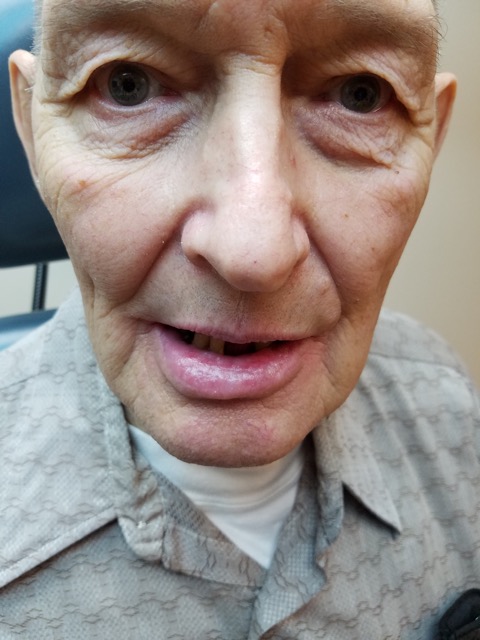At first, George Jirousek thought he had a cold sore or a chapped lower lip. It bled occasionally, and he used quite a bit of lip balm. He wasn’t too concerned about it, but he decided to have it checked out when it grew to cover three-quarters of his lip. It turned out to be a squamous cell carcinoma.
The typical treatment for this type of cancer is surgery, but Jirousek wasn’t an ideal candidate for surgery due to the anticoagulant he takes for a heart valve issue. In addition, surgery in this case would likely mean removal of the entire lip followed by complex plastic surgery facial reconstruction.
“That bothered me,” says Jirousek, a 79-year-old retired journeyman electrician. “I thought, this isn’t going to fly. There’s got to be another way.”

He was referred to Dr. Matthew Witek, UW Health radiation oncologist, who recommended brachytherapy as a way to deliver a higher dose to the cancer than would be possible with conventional radiotherapy. Brachytherapy is a technique in which radioactive seeds are inserted directly into the tumor bed to deliver a precise localized dose of radiation while minimizing exposure to healthy surrounding tissue.
“Brachytherapy was his best radiotherapy option,” Witek says. “If we were to treat him with external beam radiotherapy, his jaw, tongue and salivary glands would also receive a considerable amount of radiation. Brachytherapy would keep the dose well localized to the lip while sparing the surrounding normal tissue.”
Using brachytherapy in this manner is not highly common, Witek says. “Special expertise and experience with the technique is required. It’s great that we can offer this treatment for selected cases especially when there are contraindications to surgery. Hopefully, his favorable outcome will help put brachytherapy back in the treatment toolbox for lip cancers.”
Meticulous placement of the catheter to house the radioactive seeds is critical to eradicating the cancer while achieving a favorable cosmetic outcome. Witek placed the catheter through the lower lip approximately five millimeters from the surface. Jirousek began daily treatment the following day, which continued for four weeks.
Jirousek said his lower lip was sore during and immediately after treatment, but healed within a month. At his recent four-month post-treatment follow-up appointment, Jirousek was doing well. He says there are no lasting side effects, and he continues to enjoy his outdoor pursuits—cutting wood, snowmobiling, gardening, hunting and fishing.
“I try to keep really active,” Jirousek says. “Otherwise, I think I’d just go downhill.”
Jirousek’s wife, Mary, nods in agreement and adds: “I bought him a straw hat to wear when he goes fishing—a big one.”